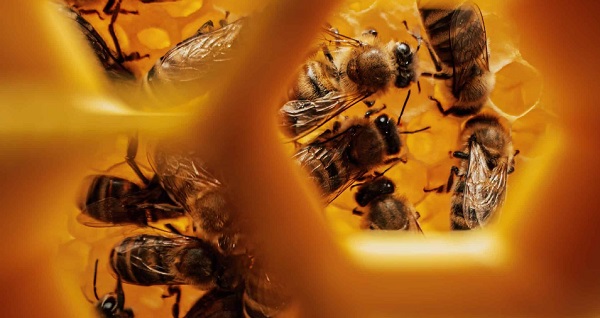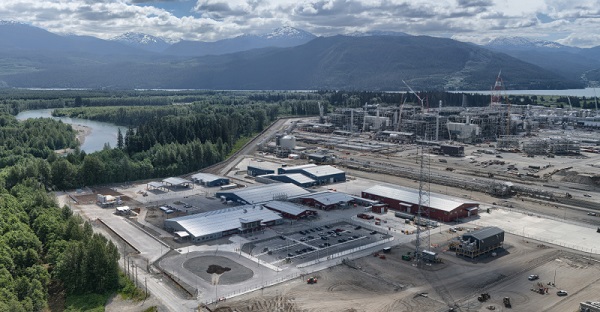Agriculture
Alberta needs to fill agriculture jobs, amid a Covid- 19 created foreign worker shortage

Albertans out of work because of the COVID-19 pandemic, have a new resource to find a work in the province’s essential agriculture businesses and companies that make-up the food supply chain.
“There are great job opportunities on Alberta farms and ranches.” Devin Dreeshen, Minister of Agriculture and Forestry announced at the Alberta Legislature as the government launched a new web-based support page called, Agriculture Job Connector. Dreeshen added, “this new website will help Albertans find an exciting new job in this essential service.”

A pork farm worker in an open sow housing unit in Alberta. Photo Courtesy/Maple Leaf Foods
Alberta is not the only jurisdiction in Canada and around the world that is having problems filling farm and food supply chain jobs.
In the United Kingdom, due to temporary farm worker restrictions during the COVID-19 pandemic, farmers have been scrambling to find workers so the crops can get planted and to stop crops from rutting on the trees or in the fields. Britons, usually make up only one percent of the temporary farm workforce. Citizens have responded to calls for a “new land army” to help fill the farm and food chain jobs. Up to 70,000 workers are needed. People looking for work have flocked to websites, searches for terms including “fruit picker” or “farm worker” surged by 338% and 107% respectively, with applications up 83% in the last month.

Alberta’s beekeeping industry and honey producers depend on temporary foreign workers during the busy season. Photo Courtesy/Alberta Beekeeper Commission
Family farms and companies throughout Alberta’s food supply chain rely on the “federal temporary foreign workers (TFW) program” to hire seasonal and full-time jobs that Albertans do not historical fill. Although the federal government recently announced loosing some of the TFW rules, the industry is nervous about a worker shortfall. The coronavirus’ on-going world-wide travel restrictions, along with a mandatory 14-day quarantine, once a foreign worker arrives, has raised serious concerns about a possible pending foreign worker shortage.
During this pandemic, the Ministry of Agriculture and Forestry is working to reinforce that the, ‘agriculture and agri-food industry has never been more critical to the health and safety of Albertans and to our economy.’ Dreeshen added, “Thank-you to all who continue to work that keep our food supply safe.”

A combine works a field of wheat in Alberta. Photo Courtesy/Alberta Wheat Commission
Alberta’s Agriculture Job Connector has opportunities for both skilled and non-skilled workers. Some posted job openings are for one person, others need up to as many as 50 new hires. Job openings in Alberta can be found through these links, Alberta Alis, AgCareers.com, Career in Foods, Alberta Cattle Feeders’ Association and Grasslands Recruitment Specialists. A sampling of some of the openings in Alberta, with the offer salaries can be found through the links below.

A woman works at a beef cattle operation in Alberta.
Some of the jobs open in Alberta from the links above;
- Farm Foreman/Woman in Hussar, $26.75 to $28.00 an hour
- Worm Picker in Stony Plain, $15.50 an hour *(Update, Job filled April 11th)
- Packer Vegetables Farm in Medicine Hat, $15.20 an hour (30-vacancies)
-
Grain Services Coordinator in Fort Saskatchewan, salary not posted
- Supervisor, Food Services in Wabasca-Desmarais, 15.50 an hour (2-vacancies)
- Vegetable Farm Worker in Wildwood, $15.00 an hour (6-vacancies)
- Farm Labourer in Acme, $15.00 to 22.00 an hour

- Branch Manager Crop Input Retailer, in Fairview
- Swine Herdsperson in Mayerthorpe, $16.00 to $17.50 an hour (2-vacancies)
- Dairy Herdsperson in Isidore, $20.00 an hour(4-vacancies)
- Video of day in the life at a beef cattle operation. Kolk Farms Ltd., in Iron Springs
- Beef Cattle Herdsperson in Picture Butte, $21.75 an hour (4-vacancies)
- Labourer Beef Processing in Calgary, $15.00 to $17.50 an hour
- Cattle Farm Worker in St. Michael, $18.00 to $20.00 an hour

- Apiary Technician (Bee Keeper) in Morinville, $15.00 to $24.00 an hour (3-vacancies)
- Certified Crop Advisor in Brooks, salary not posted
- Dairy Sales Rep in Edmonton, salary not posted
- Cheese Maker in Ponoka, $23.00 to $24.00 an hour
- Farm Machinery Operator in Olds, $20.00 to $25.00 an hour (2-vacancies)
- Mushroom Harvesting Labourer in Crossfield, $15,00 an hour (28-vacancies)

- General Poultry Farm Worker in Ferintosh, $20.00 an hour (5-vacancies)
- Poultry Farm Foreman/Woman in Millet, $21.65 an hour
- Poultry Farm Worker in Ponoka, $15.00 to $17.00 an hour (6-vacancies)
- Greenhouse Worker in Redcliff, $15.20 an hour (3-vacancies)
- Food Processing Labourer Pork in Lethbridge, $15.40 to $22.75 an hour (5-vancanies)
- Pork Production Technician in Falher, $15.90 an hour (8-vacancies)
- Food Processing Labourer Beef in High River, 19.55 to $23.50 an hour (50-vacancies)

Covid- 19 has created thousands of temporary & full-time jobs on Alberta Farms & in the food supply chain.
Click here to read more on Todayville Edmonton.
Agriculture
Lacombe meat processor scores $1.2 million dollar provincial tax credit to help expansion

Alberta’s government continues to attract investment and grow the provincial economy.
The province’s inviting and tax-friendly business environment, and abundant agricultural resources, make it one of North America’s best places to do business. In addition, the Agri-Processing Investment Tax Credit helps attract investment that will further diversify Alberta’s agriculture industry.
Beretta Farms is the most recent company to qualify for the tax credit by expanding its existing facility with the potential to significantly increase production capacity. It invested more than $10.9 million in the project that is expected to increase the plant’s processing capacity from 29,583 to 44,688 head of cattle per year. Eleven new employees were hired after the expansion and the company plans to hire ten more. Through the Agri-Processing Investment Tax Credit, Alberta’s government has issued Beretta Farms a tax credit of $1,228,735.
“The Agri-Processing Investment Tax Credit is building on Alberta’s existing competitive advantages for agri-food companies and the primary producers that supply them. This facility expansion will allow Beretta Farms to increase production capacity, which means more Alberta beef across the country, and around the world.”
“This expansion by Beretta Farms is great news for Lacombe and central Alberta. It not only supports local job creation and economic growth but also strengthens Alberta’s global reputation for producing high-quality meat products. I’m proud to see our government supporting agricultural innovation and investment right here in our community.”
The tax credit provides a 12 per cent non-refundable, non-transferable tax credit when businesses invest $10 million or more in a project to build or expand a value-added agri-processing facility in Alberta. The program is open to any food manufacturers and bio processors that add value to commodities like grains or meat or turn agricultural byproducts into new consumer or industrial goods.
Beretta Farms’ facility in Lacombe is a federally registered, European Union-approved harvesting and meat processing facility specializing in the slaughter, processing, packaging and distribution of Canadian and United States cattle and bison meat products to 87 countries worldwide.
“Our recent plant expansion project at our facility in Lacombe has allowed us to increase our processing capacities and add more job opportunities in the central Alberta area. With the support and recognition from the Government of Alberta’s tax credit program, we feel we are in a better position to continue our success and have the confidence to grow our meat brands into the future.”
Alberta’s agri-processing sector is the second-largest manufacturing industry in the province and meat processing plays an important role in the sector, generating millions in annual economic impact and creating thousands of jobs. Alberta continues to be an attractive place for agricultural investment due to its agricultural resources, one of the lowest tax rates in North America, a business-friendly environment and a robust transportation network to connect with international markets.
Quick facts
- Since 2023, there are 16 applicants to the Agri-Processing Investment Tax Credit for projects worth about $1.6 billion total in new investment in Alberta’s agri-processing sector.
- To date, 13 projects have received conditional approval under the program.
- Each applicant must submit progress reports, then apply for a tax credit certificate when the project is complete.
- Beretta Farms has expanded the Lacombe facility by 10,000 square feet to include new warehousing, cooler space and an office building.
- This project has the potential to increase production capacity by 50 per cent, thereby facilitating entry into more European markets.
Related information
Agriculture
Unstung Heroes: Canada’s Honey Bees are not Disappearing – They’re Thriving

Canada’s Bee Apocalypse began in 2008. That was the year the Canadian Association of Professional Apiculturists (CAPA) first reported unusually high rates of winter bee colony losses. At 35 percent, the winter die-off that year was more than twice the normal 15 percent rate of attrition.
“Successive annual losses at [these] levels … are unsustainable by Canadian beekeepers,” the CAPA warned. This set off an avalanche of dire media reports that now appear on a regular basis. Among the many examples over the years: Huge Honey Bee Losses Across Canada” and “Canada’s bee colonies see worst loss in 20 years”. As each of these stories reminds readers, the disappearance of honey bees will doom our food supply, given their crucial role in pollinating crops including canola, soyabeans, apples, tomatoes and berries.
This year the black-and-yellow striped Cassandras are back at work, with headlines shouting “Scientists warn of severe honeybee losses in 2025” and “The Bees are Disappearing Again”. If it’s spring, the bees must be disappearing. Again.
It is, however, mathematically impossible for any species to be in an allegedly continuous and calamitous state of decline over nearly two decades and never actually reduce in number. For despite the steady supply of grave warnings regarding their imminent collapse, Canada’s bees are actually buzzing with life.
In 2007, according to Statistics Canada, there were 589,000 honey bee colonies in Canada,; in 2024, they reached 829,000, just shy of 2021’s all-time high of 834,000. Figuring a conservative summertime average of 50,000 bees per colony, that means there are approximately 12 billion more honey bees in Canada today than when the Bee Apocalypse first hit.
As for beekeepers, their numbers have also been growing steadily, and now stand at 15,430 – the most recorded since 1988. As CAPA’s report acknowledges, “the Canadian beekeeping industry has been resilient and able to grow, as proven by the overall increase in the number of bee colonies since 2007 despite the difficulties faced every winter.”
How is this possible? As is usually the case where there’s a need to be filled, the market holds the answer.
It is true that Canadian honey bees face a long list of threats and challenges ranging from mites and viruses to Canada’s harsh winters. It is also true that they perform a crucial service in pollinating crops, the value of which is estimated at $7 billion annually. However, this underscores the fact that bees are a livestock bred for a particular agricultural purpose, no different from cattle, chickens or pen-raised salmon. They are a business.
And in spite of its alleged status as an environmental totem, the honey bee isn’t even native to North America. It was first imported by European settlers for its honey-making abilities in the 1600s. Since then, it has been cultivated with deliberate commercial intent – allowing it to outcompete native pollinators such as bumble bees and butterflies even though it is poorly suited to the local winter. (This highlights the irony of all those native-plant pollinator gardens virtuously installed in neighbourhoods across Canada that end up supporting an invasive honey bee population.)
The significance of the bee economy means that when a beehive collapses over the winter for whatever reason, beekeepers have plenty of motivation to regenerate that colony as swiftly as possible. While hives can create their own queens over time, this can be a slow process given the cold Canadian climate. The better option is to simply buy a new queen from a warmer country.
In 2024, Canada imported 300,000 queens worth $12 million, mostly from the U.S., Italy, Australia and Chile. That works out to $40 each. In a miracle of nature, each of these new queens can lay up to 2,500 eggs a day, and each egg takes just two to three weeks to reach full maturity as a worker or drone. It is also possible to import entire “bee packages” that include a queen and 8,000 to 10,000 bees.
As a result, even a devastating 50 percent winter loss rate, something that has occurred only rarely in Canada in individual provinces and never nationally, isn’t necessarily fatal to any beekeeping operation. The beekeeper can purchase imported queens in April, split their existing colonies and be back in business by May or June.
And regardless of the honey bee’s apparent difficulties with Canada’s unforgiving weather (efforts are ongoing to breed a hardier Canadian variant), there’s no shortage of bees worldwide. Earlier this year, the German statistical agency reported the global beehive count rose from 69 million in 1990 to 102 million in 2023. Another study looking back to 1961 by New Zealand researchers found the number of honey bee colonies has “nearly doubled” over this time, while honey production has “almost tripled.” As the New Zealand report observes, “Headlines of honey bee colony losses have given an
impression of large-scale global decline of the bee population that endangers beekeeping, and that the world is on the verge of mass starvation.” Such claims, the authors note, are “somewhat inaccurate.” In truth, things have never been better for bees around the world.
Here in Canada, the ability to import queens from other countries, together with their prodigious reproductive capabilities, backstops the amazing resiliency of the bee industry. Yes, bees die. Sometimes in large numbers. But – and this is the bit the headlines always ignore – they come back. Because the market needs them to come back.
If there is a real threat to Canada’s bee population, it’s not environmental. It’s the risk that unencumbered trade in bees might somehow be disrupted by tariffs or similar bone-headed human interventions. Left on their own, bees have no problem keeping busy.
The longer, original version of this story first appeared at C2CJournal.ca
-

 Fraser Institute1 day ago
Fraser Institute1 day agoBefore Trudeau average annual immigration was 617,800. Under Trudeau number skyrocketted to 1.4 million annually
-

 MAiD2 days ago
MAiD2 days agoCanada’s euthanasia regime is already killing the disabled. It’s about to get worse
-

 Frontier Centre for Public Policy1 day ago
Frontier Centre for Public Policy1 day agoNew Book Warns The Decline In Marriage Comes At A High Cost
-

 Business2 days ago
Business2 days agoPrime minister can make good on campaign promise by reforming Canada Health Act
-

 Addictions1 day ago
Addictions1 day ago‘Over and over until they die’: Drug crisis pushes first responders to the brink
-

 International2 days ago
International2 days agoChicago suburb purchases childhood home of Pope Leo XIV
-

 Daily Caller1 day ago
Daily Caller1 day agoUSAID Quietly Sent Thousands Of Viruses To Chinese Military-Linked Biolab
-

 Energy1 day ago
Energy1 day agoLNG Export Marks Beginning Of Canadian Energy Independence



